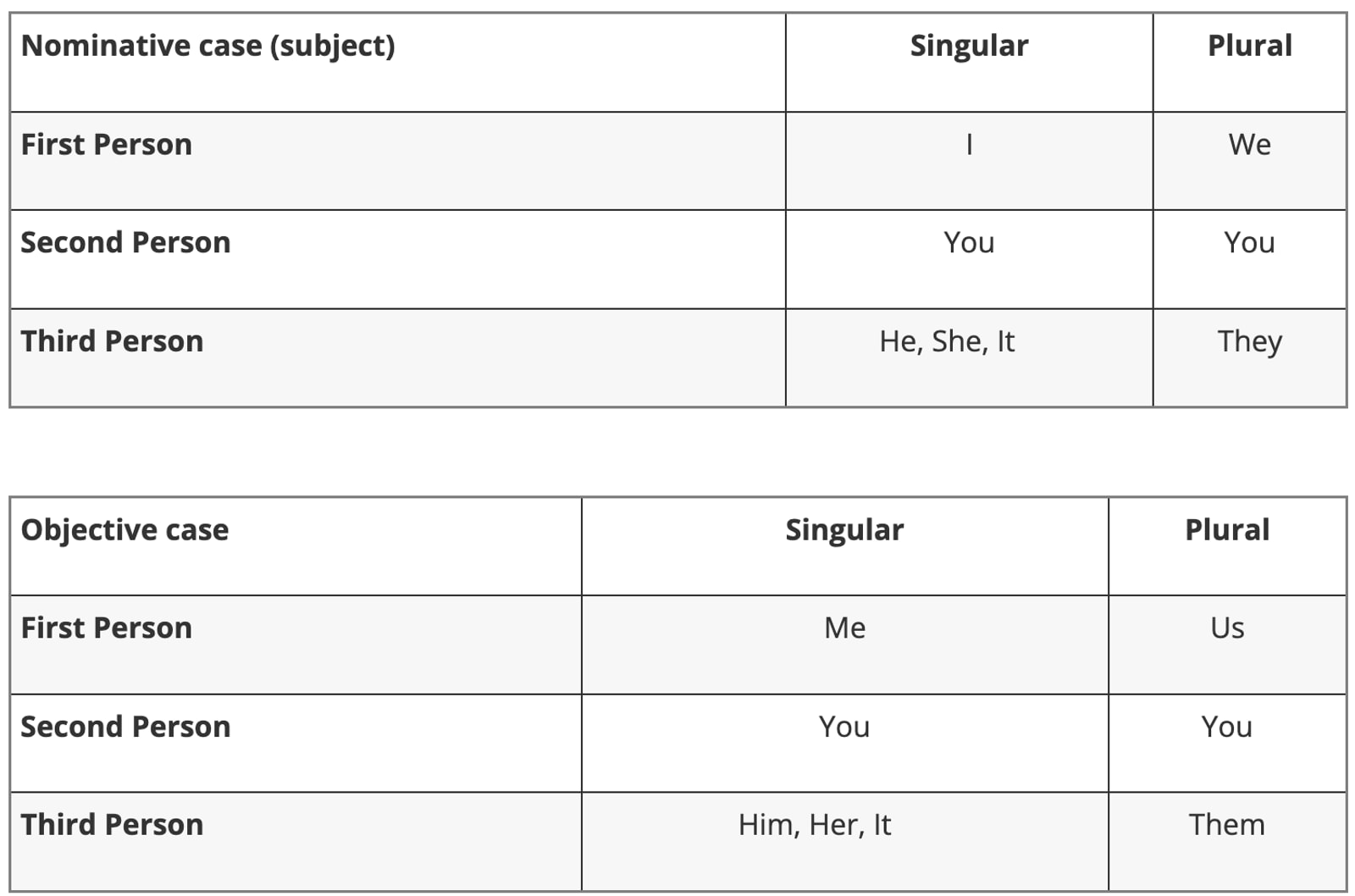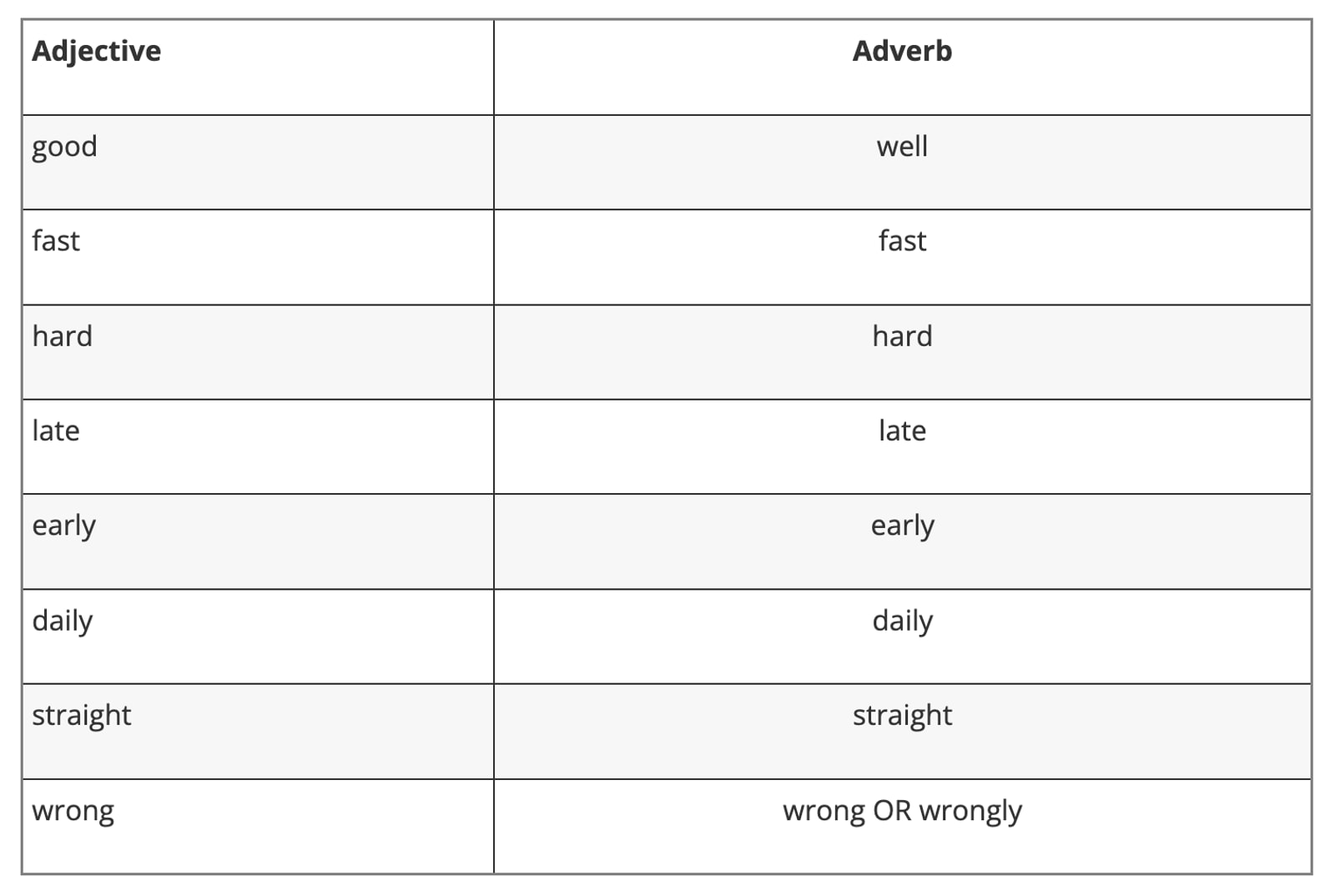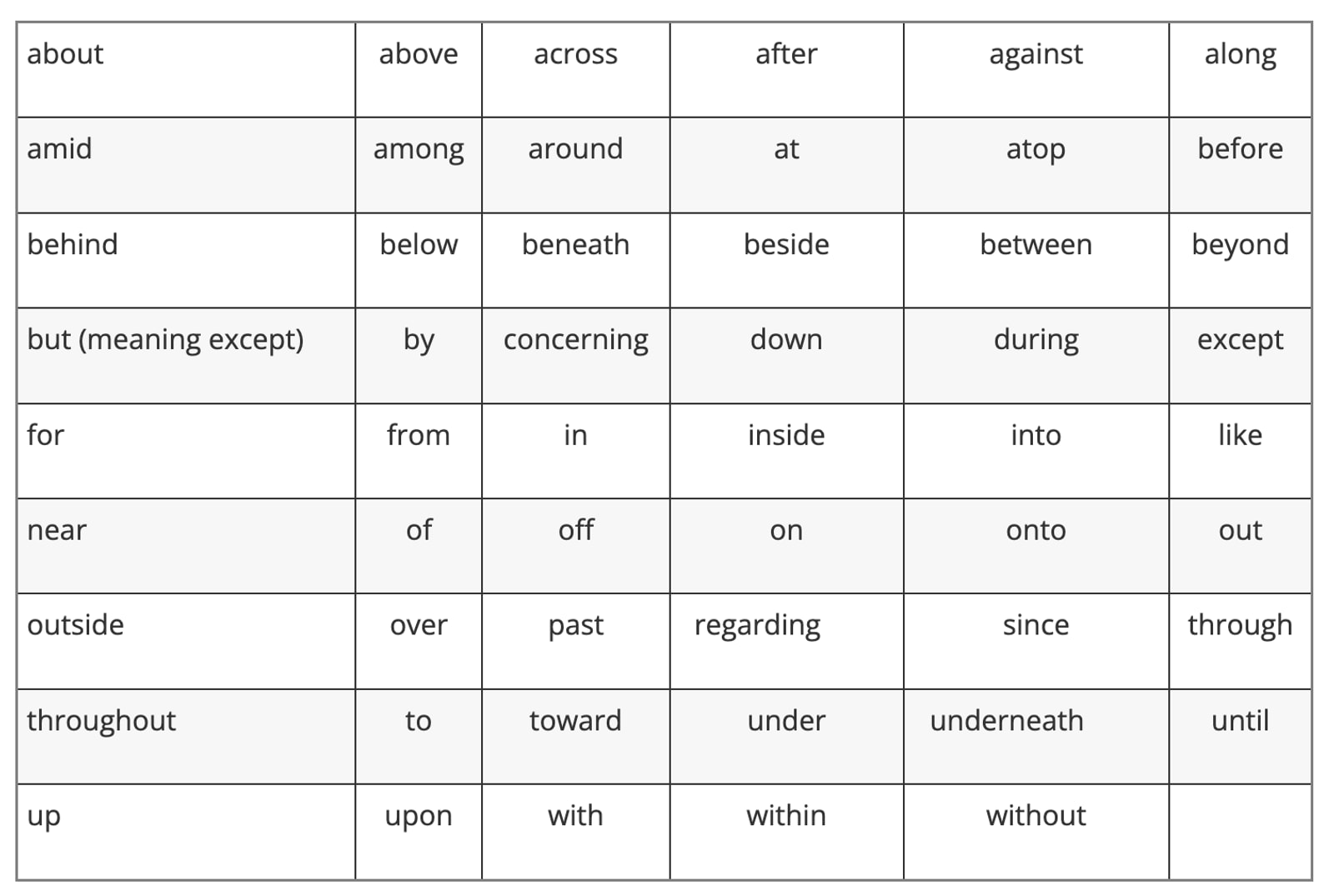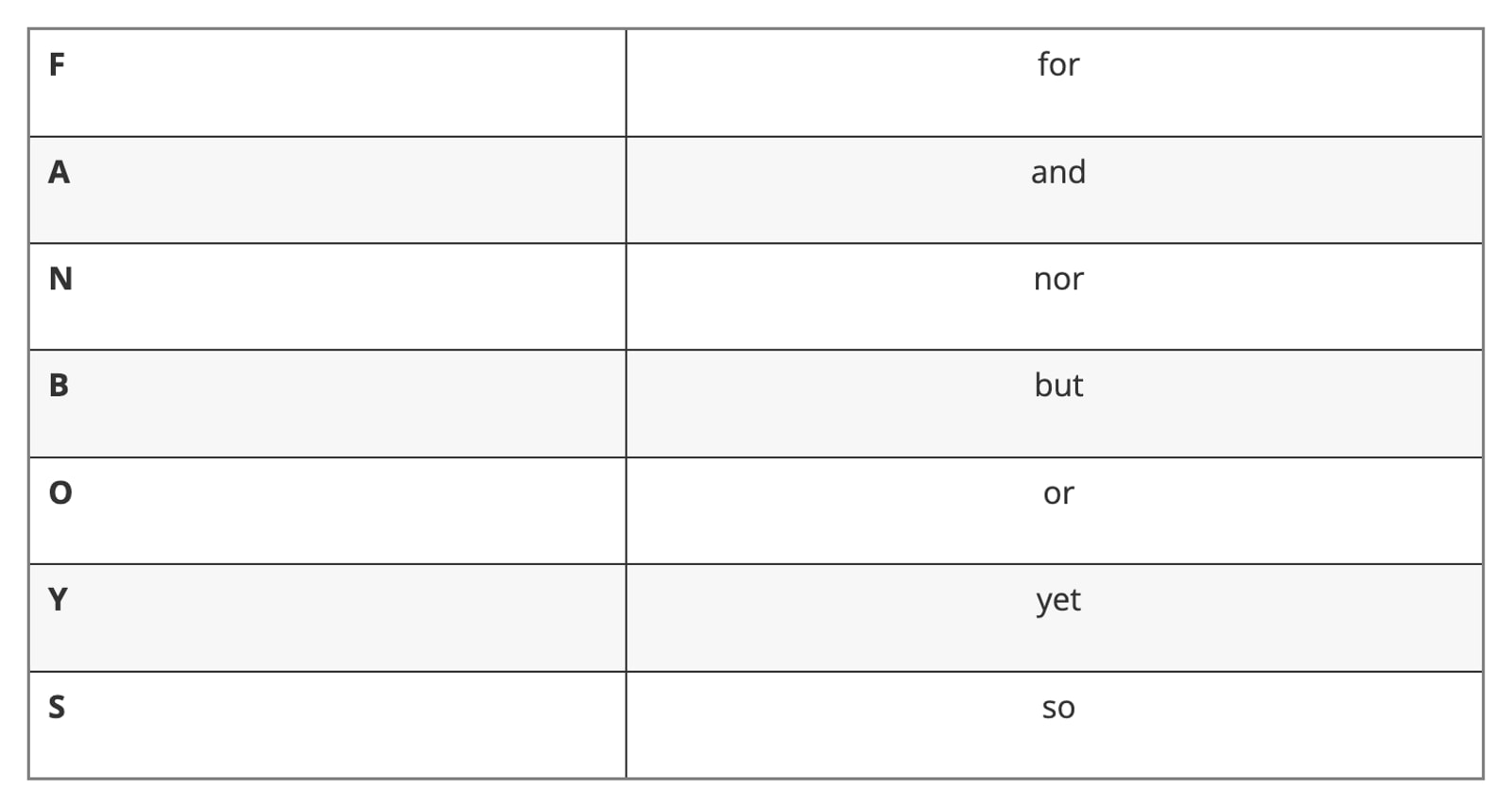Complete Parts of Speech for SAT Writing and ACT English
Author
Hartwell
Date Published

“Parts of speech” is just a way of saying that every word in English can be grouped into one of eight categories, depending on how it is used in a sentence. Of these eight parts of speech, only seven are tested on the SAT Writing and ACT English exams.
Understanding the different parts of speech is very important if you want to have a solid grasp of English grammar and do well on the SAT and ACT. Sadly, many schools today no longer spend much time teaching this kind of grammar.
Do you feel unsure about what a preposition is, or can you not tell the difference between an adjective and an adverb? Do you feel a bit out of practice since you learned this a long time ago? This article will give you the basic information you need before you move on to more difficult grammar topics. I will also explain some key grammar rules for the SAT and ACT.
How Should You Use This Guide?
This guide is here to help you review the basics before starting some of the harder grammar guides for the SAT and ACT.
Many of the ideas covered here are things you might already know if you have learned grammar at school. Even if you haven’t, most of these ideas will feel natural if you are a native English speaker.
However, if you have not studied grammar in depth, you can use this as a reference to help you better understand the simple concepts that our other guides will not explain. Come back to this article if you find a term you do not know, or if you need a reminder of what something means.
A lot of the things mentioned in this guide are not tested directly on the ACT or SAT. Instead, these ideas are the basic building blocks needed to understand the more difficult rules that do get tested. So, you do not need to memorize the names of all the grammar terms in this guide. Just understand the concepts.
What Parts of Speech Are on SAT Writing and ACT English?
The seven parts of speech tested on the SAT and ACT are nouns, pronouns, verbs, adjectives, adverbs, prepositions, and conjunctions.
Once you understand the rules for each part of speech, you will see that these are simple ideas, and you can use them to help you understand harder grammar problems.
Nouns
Nouns are words that name people, places, things, or ideas.
If you are not sure whether something is a noun, try putting “a” or “the” before it and see if it sounds right. If it does, it is probably a noun.
Examples:
“A cat” and “the cat” both sound correct. So, “cat” is a noun.
“A him” and “the him” do not sound right. So, “him” is not a noun.
Categories of Nouns
Nouns can be divided into different groups:
Common Nouns refer to people, places, or things in a general way. They are not the names of specific people, places, or things.
Proper Nouns are the names of specific people, places, or things.
Examples:
Common nouns: girl, city, bridge, university, company
Proper nouns: Mary, San Francisco, Golden Gate Bridge, University of Notre Dame, PrepScholar
There are also other ways to describe nouns:
Concrete Nouns are people, places, or things that you can see or touch.
Abstract Nouns are ideas, feelings, subjects, or qualities. You cannot physically touch them.
Examples:
Concrete nouns: water, air, street, person, concrete
Abstract nouns: freedom, love, justice, hockey, biology
Uses of Nouns
Nouns can play several different roles in a sentence. They can be the subject, a predicate nominative, an appositive, a direct object, an indirect object, or the object of a preposition. There are other uses for nouns, but we will not talk about them right now.
Note: It is not important for you to remember the names of these roles. What matters is understanding how nouns can be used, so you will know if they are used correctly or not.
Subject
The subject of a sentence is the person or thing that does the action.
Example:
Mary went to the store.
Here, “Mary” is the subject because she is doing the action.
Predicate Nominative
A predicate nominative comes after a linking verb and gives another name for the subject of the sentence.
Example:
Mary is a great friend.
“Mary” is the subject. “Friend” is the predicate nominative. Mary and friend are the same person in this sentence.
Appositive
An appositive is a noun that gives more information about another noun in the sentence. Instead of following a linking verb, it usually sits right next to the noun it describes and is set off by commas.
You can often take the appositive out of the sentence, and the sentence will still make sense.
Example:
My friend, Mary, is an exceptional person.
Here, “Mary” is the appositive because it tells us who “my friend” is.
If you take out “Mary,” the sentence is still correct:
My friend is an exceptional person.
Direct Object
A direct object is a noun that receives the action of a verb.
Example:
I got a perfect score on the SAT.
Ask: I got what? I got a score. So, “score” is the direct object.
Indirect Object
An indirect object is a noun that receives the direct object.
Example:
I made Kim some brownies.
Ask: I made what? Brownies. So, “brownies” is the direct object.
Who got the brownies? Kim did. So, “Kim” is the indirect object.
Object of a Preposition
A prepositional phrase must have a preposition and a noun. The noun after the preposition is called the object of the preposition.
Example:
I got a perfect score on the SAT.
Here, “on” is the preposition, and “SAT” is the object of the preposition.
Forming the Plural of Nouns
This is not a concept that is directly tested on the SAT or ACT, but sometimes you need to recognize whether a noun is singular or plural to match it with the correct verb.
Most nouns become plural by simply adding -s.
Examples:
cat + -s = cats
donkey + -s = donkeys
If the noun ends in -s, -x, -z, -sh, or -ch, add -es to make it plural. This is because it is hard to pronounce those endings followed just by “-s.”
Examples:
fox + -es = foxes
buzz + -es = buzzes
brunch + -es = brunches
If a noun ends with a consonant and then -y, change the -y to -ies.
Examples:
pony → ponies
fly → flies
Some nouns that end in -f or -fe make the plural by changing -f or -fe to -ves. This also makes it easier to pronounce.
Examples:
leaf → leaves
life → lives
Some nouns form their plurals in an irregular way. There are no specific rules for these; you just have to memorize them. Luckily, most are common words you probably already know.
Examples:
mouse → mice
child → children
man → men
goose → geese
foot → feet
Some nouns do not change at all when they are plural.
Examples:
deer → deer
fish → fish
sheep → sheep
NOTE:
Never make a plural by adding -’s (apostrophe + s). That should only be used to show possession, not to make something plural.
Forming the Possessive of Nouns
Possessive nouns are used to show ownership or that something belongs to someone or something.
To form the possessive of a singular noun, always add -'s.
Examples:
Bob's, mouse's, donkey's
To form the possessive of a plural noun that ends in -s, just add an apostrophe (’) after the -s.
Examples:
purses’, monkeys’, dogs’
To form the possessive of a plural noun that is irregular and does NOT end in -s, add -'s.
Examples:
children's, women's, mice's
Special Types of Nouns
If you know all the rules above, here are a few special types of nouns you might not have learned about!
Gerunds
The -ing form of a verb can be a verb when it has a helping verb, but if it stands alone, it is called a gerund. A gerund acts as a noun in a sentence.
Example:
Baking is a pleasurable hobby.
In this sentence, “baking” is the subject and is used as a noun.
Infinitive as a Noun
The infinitive form (“to” + verb) can also act as a noun in some sentences.
Example:
He likes to run.
Here, “to run” is the direct object of the verb “likes.” So it is being used as a noun.
Pronouns
Pronouns are words that can take the place of nouns. Unlike nouns, pronouns change form depending on how they are used in a sentence.
What Is a “Case”?
The “case” of a pronoun means its form changes depending on its job in the sentence. As you saw before, nouns can be the subject of a sentence or work as objects. In the same way, personal pronouns use one form when they are the subject or predicate nominative, and a different form when they are used as an object (such as a direct object, indirect object, or object of a preposition).
Note: Correct use of pronoun case is tested on the ACT!
Personal Pronouns

What Do These Charts Mean?
Use the nominative (subject) form of a personal pronoun only when it is the subject of a clause or the predicate nominative. (Need a reminder about these? See the Noun section above!)
Examples:
She and I went to the store.
Michael and he are my best friends.
Many people might say “Michael and him,” but that is wrong because “he” is a subject in the sentence and must be in the nominative case. If you are unsure, try removing the extra subject. You would not say, “Him is my best friend.”
Example:
The winner of the race was he.
This might sound strange, but it is correct. Try changing the sentence order: He was the winner of the race. Here, “he” follows a linking verb (“was”) and acts as the predicate nominative.
The objective case of pronouns should be used as direct objects, indirect objects, or objects of prepositions.
Examples:
He gave her and me great presents.
He gave us a great present.
The presentation will be given by Tom and me.
She loves him. I don’t like you.
If you want to learn more about pronoun cases, you can read our guide.
Non-Personal Pronouns
Non-personal pronouns include words like: this, that, both, some, few, many, either, which, who, and one. These pronouns do not change their form between subject (nominative) and object (objective) cases.
Sometimes these pronouns might seem strange alone, but their use is correct.
Examples:
I have two dogs. Both are very lucky.
This rose is beautiful. This is my favorite flower.
Many people went to search for the treasure. Only some returned.
These pronouns can be difficult because it is sometimes unclear if they are singular or plural. To check, try adding the word “one” after the pronoun. If it makes sense, it is singular, so use a singular verb.
Examples:
This (one) is my favorite. CORRECT
That (one) is my sister. CORRECT
Few (one) succeeds. INCORRECT
If adding “one” does not work, mentally add “of them.” If that makes sense, use a plural verb.
Examples:
Many (of them) try to get a perfect SAT score. CORRECT
Few (of them) succeed. CORRECT
Exception: The pronoun “one” is always singular, even if “one of them” sounds correct. Always use a singular verb with “one.”
Forming the Possessive of Pronouns
Possessive pronouns show ownership and can stand alone without another noun.

Because these are pronouns (not adjectives), they can be used independently.
Examples:
Hers is the chocolate dessert.
That report card is yours.
Theirs beat out ours.
Main Rules for Pronouns on the SAT and ACT
The SAT and ACT often test your knowledge of pronouns. Here are the main rules you need to know:
Rule 1: Pronouns Must Have a Clear Antecedent
The noun a pronoun replaces is called its antecedent. Every pronoun must clearly refer to a specific noun found in the same sentence or in a nearby sentence. If the connection is not clear, it is a grammar mistake.
Example:
Mary and Eileen both like strawberries, but she likes them more.
This is incorrect because it is unclear who “she” refers to.
Sometimes, the antecedent is in the previous sentence. Even then, it should still be clear.
Example:
John Wallach, an award-winning journalist who covered conflicts in the Middle East for two decades, founded Seeds of Peace in 1993. He chose the campsite because it is a beautiful natural setting far from the places of conflict. It remains unaffiliated with any nation, organization, or peace group, and although countries may select their campers, they cannot pay for the camp.
In this passage, “it” should refer to “Seeds of Peace,” not “campsite.” Since this is confusing, it is incorrect.
Rule 2: Pronouns Must Be Consistent
You should use the same type of pronoun throughout a sentence. For example, do not switch between “one” and “you” in the same sentence.
Examples:
Before one starts a new class, you should always read the syllabus. (INCORRECT)
Before you start a new class, you should always read the syllabus. (CORRECT)
Before one starts a new class, one should always read the syllabus. (CORRECT)
Before people start a new class, they should always read the syllabus. (CORRECT)
Rule 3: Pronouns Must Match Their Antecedents in Gender and Number
A pronoun must agree with its antecedent in both gender (male or female) and number (singular or plural).
Examples:
The boys all asked her out, but she didn’t like him. (INCORRECT)
The boys all asked her out, but she didn’t like them. (CORRECT)
One of the children painted this portrait. Art is a great talent of theirs. (INCORRECT)
One of the children painted this portrait. Art is a great talent of his or hers. (CORRECT)
Each of the actresses was considered most beautiful when they were in their prime. (INCORRECT)
Each of the actresses was considered most beautiful when she was in her prime. (CORRECT)
Verbs
Verbs are words that show actions (like "run" or "eat") or states of being (like "is" or "seem"). For more detailed information about verbs on the SAT and ACT, see our grammar guide.
Types of Verbs
Linking Verbs
Linking verbs connect the subject of a sentence to more information about it, usually a predicate nominative (noun) or a predicate adjective. Think of a linking verb as an equals sign (=). The most common linking verb is “to be.”
Examples:
I am a human being. (I = human being)
The cake smells delicious. (cake = delicious)
Action Verbs
Action verbs describe what the subject is doing. Some action verbs have a direct object (something that receives the action) and are called “transitive verbs.” Others do not have a direct object and are called “intransitive verbs.” You don’t need to remember these terms for the test, but know the idea.
Examples:
The car rolled backwards. (No direct object)
I ate wonderful toast. (Ate what? — toast is the direct object)
Conjugating Verbs
Most verbs have a simple pattern in the present tense. For regular verbs, only the third person singular (he/she/it) form is different.

This is very important on the SAT and ACT because of…
Subject-Verb Agreement
A singular subject needs a singular verb, and a plural subject needs a plural verb. The SAT and ACT often try to trick you by putting other nouns close to the verb.
Example:
My sister, despite having to carry three children, walk five miles every day. (Incorrect)
Ask yourself: Who is doing the action? It is “my sister” (singular), so you need:
My sister, despite having to carry three children, walks five miles every day. (Correct)
Another example:
Maria and Joe likes to dance. (Incorrect)
With two subjects (Maria and Joe), use the plural:
Maria and Joe like to dance. (Correct)
Verb Tense
Verb tense shows when an action happens. Keep your tenses consistent in a sentence.
Present tense — something happening now:

Past tense — something that already happened:

Future tense — something that will happen:

If you mix tenses in one sentence, it can be an error.
Example:
After Mary had eaten the soup, she eats the main course. (Incorrect)
Mixing "had eaten" (past perfect) and "eats" (present).
Use:
After Mary had eaten the soup, she ate the main course. (Correct)
Another example:
The olive oils we tasted yesterday are delicious. (Incorrect)
"tasted" is past tense; "are" is present tense.
Use:
The olive oils we tasted yesterday were delicious. (Correct)
Adjectives
What Are Adjectives?
Adjectives are words that describe nouns or pronouns. They tell us what someone or something looks like, feels like, or is like.
Types of Adjectives
Common adjectives describe general qualities or features, like “beautiful,” “short,” “angry,” or “heavy.”
Proper adjectives are made from proper nouns and must be capitalized.
Examples:
I like Mexican food.
He plays the French horn.
Possessive Adjectives
Possessive adjectives are formed from personal pronouns. They are used to tell us who something belongs to, and must go together with a noun.

Examples:
That is my car. (“my” + noun)
His great skill is running. (“his” + noun)
Our faucet constantly leaks. (“our” + noun)
Be careful: Words like “mine,” “his,” and “ours” can be possessive pronouns (stand alone) or possessive adjectives (come before a noun).
Examples:
That car is mine. (possessive pronoun)
That is my car. (possessive adjective)
Demonstrative Adjectives
These adjectives point out specific things and include “this,” “that,” “these,” and “those.” When used as adjectives, they must describe a noun.
Examples:
I hate that person.
My best friends are these people.
Adjectives Formed From Verbs (Participles)
Some adjectives come from verbs and are called participles.
Present participles end in “-ing.” (Example: “chirping” birds)
Past participles usually end in “-ed.” (Example: “burned” chicken)
Adjectives Formed from Nouns
Sometimes a noun is used before another noun to describe it, acting like an adjective.
Example:
The basketball player is tall.
(“basketball” describes the kind of player)
Never put a comma between a noun and the noun it describes.
INCORRECT: The basketball, player is tall.
CORRECT: The basketball player is tall.
Uses of Adjectives
Placing Adjectives Before Nouns
Most adjectives go before the noun they describe.
Example:
The beautiful girl walked down the street.
Multiple Adjectives
If more than one adjective comes before a noun, separate them with a comma if their order does not matter.
Examples:
The slobbering, feisty dog wagged his tail.
The feisty, slobbering dog wagged his tail.
If the order of adjectives is important (if swapping them would change the meaning), do NOT use a comma.
Examples:
She went to the store to purchase spreadable chocolate frosting. (CORRECT)
She went to purchase chocolate, spreadable frosting. (INCORRECT – order matters)
Do not sit in the broken wood chair. (CORRECT)
Do not sit in the wood, broken chair. (INCORRECT – order matters)
Predicate Adjectives
Adjectives can also come after linking verbs (like “is,” “appears,” or “smells”) and describe the subject. These are called predicate adjectives.
Examples:
The cake smells delicious. (“delicious” describes “cake”)
That runner is very fast. (“fast” describes “runner”)
Adverbs
What Are Adverbs?
Adverbs are words that describe or change the meaning of verbs, adjectives, or other adverbs.
Note: The SAT and ACT often test the difference between adverbs and adjectives. Make sure you know what the adverb or adjective is describing to use it correctly.
Examples:
He ran quickly down the street. (“quickly” describes how he ran; adverb modifies verb)
She was very happy with the present. (“very” describes how happy she was; adverb modifies adjective)
Stop talking so loudly! (“so” describes how loudly the person is talking; adverb modifies adverb)
How Are Adverbs Formed?
Many adverbs are made by adding “-ly” to an adjective.
Examples:
careful → carefully
easy → easily
quiet → quietly
However, some adverbs are not made with “-ly” and are irregular:

Common mistake:
The good girl drives very well.
“Good” is an adjective (describing “girl”). “Well” is an adverb (describing “drives”).
Important to remember:
If “good” is in a sentence, it must only describe a noun, not a verb.
Examples:
I did good on the test. (INCORRECT)
I did well on the test. (CORRECT)
Adverbs can also have the same form as adjectives:
I daily receive a daily newspaper.
Here, “daily” is an adverb (modifying “receive”) and an adjective (modifying “newspaper”).
This example is not good style because it is repetitive, but it shows that some words can be both adverbs and adjectives.
More Examples:
He woke up late and then had to take a hard test.
“Late” is an adverb (modifies “woke up”); “hard” is an adjective (modifies “test”).
The late boy worked hard on the test.
“Late” is an adjective (modifies “boy”); “hard” is an adverb (modifies “worked”).
Tricky Example:
Which is correct?
“Because our casserole was smelling surprisingly badly as it baked, the food science teacher came over to ask us what we had put in it.”
Error: “badly” is an adverb, but in this sentence, “was smelling” is a linking verb (like “is” or “seems”). With linking verbs, use an adjective to describe the subject, not an adverb.
Corrected:
Because our casserole was smelling surprisingly bad as it baked, the food science teacher came over...
If you say “badly” here, it would mean that the casserole is not good at smelling, which does not make sense!
Prepositions
What Are Prepositions?
Prepositions are words that show relationships between things in a sentence. They often tell us where something is, when something happens, or show other connections like with whom something is done.
Common Prepositions
Some of the most common prepositions are:
in, on, at, by, to, from, with, about, after, for, of, under, over, between, behind, through, during, without, among, across.

Prepositional Phrases
A prepositional phrase is a group of words that starts with a preposition and ends with a noun or pronoun, called the object of the preposition.
Examples:
at the store
in the morning
under the table
Pronouns in Prepositional Phrases
When you use a pronoun as the object in a prepositional phrase, it must be in the objective form (me, him, her, us, them).
Examples:
Give the cake to me! (Correct)
Give the cake to I! (Incorrect)
It is easy to see the mistake in simple sentences, but sometimes it’s harder in compound objects:
Examples:
He went to the mall with Sarah and I. (Incorrect)
He went to the mall with Sarah and me. (Correct)
The report was given by him and I. (Incorrect)
The report was given by him and me. (Correct)
Tip:
If you are unsure, take out the other part and see if it sounds right:
He went to the mall with me.
The report was given by me.
Prepositional Phrases and the SAT/ACT
On the SAT and ACT, prepositional phrases can be used to distract you from errors in subject-verb agreement or pronoun use. To check for mistakes, try crossing out prepositional phrases to see the core parts of the sentence.
Practice Example:
Anne Tyler’s novel The Accidental Tourist features a character whose obsession with saving time and money are absurd, yet somehow plausible.
Cross out “with saving time and money”:
Anne Tyler’s novel The Accidental Tourist features a character whose obsession are absurd...
It should be “obsession is absurd,” not “are absurd,” because “obsession” is singular and the subject.
Prepositions in Idioms
Some combinations of prepositions and other words (“idioms”) just have to be memorized because they simply “sound right” to native speakers.
Correct Idiomatic Uses:
She fell in love with him.
He is hard at work.
Incorrect (Unidiomatic) Uses:
She fell towards love at him. (Incorrect)
He is hard in work. (Incorrect)
Conjunctions
What Are Conjunctions?
Conjunctions are words that connect words, phrases, or clauses. There are three main types of conjunctions: coordinating, subordinating, and correlative.
Coordinating Conjunctions
There are seven coordinating conjunctions: for, and, nor, but, or, yet, so. A good way to remember them is with the acronym FANBOYS.

Coordinating conjunctions join similar words, phrases, or independent clauses (complete sentences).
Examples:
Joining words: John and Kim went to the store.
Joining phrases: The mouse ran out the door and through the garden.
Joining clauses: The mouse ran out the door, and I followed it.
Joining clauses: I love him, but he hates me.
When two independent clauses are joined with a coordinating conjunction, use a comma before the conjunction.
Example:
The professor paced, but the student sat quietly.
("The professor paced" and "the student sat quietly" can both stand alone as sentences.)
Subordinating Conjunctions
Subordinating conjunctions connect a dependent (subordinate) clause to an independent clause. The dependent clause gives extra information but cannot be a complete sentence on its own.

Common subordinating conjunctions: because, although, since, if, when, after, before, while, unless, as, even though, until, where, once, though
Sentence Structures:
(Subordinating conjunction + dependent clause), (independent clause).
Since she loved chocolate, she ate the whole box of candy.
(Independent clause + subordinating conjunction + dependent clause).
She ate the whole box of candy because she loves chocolate.
The dependent clause can also appear in the middle:
Sonja, because she loves chocolate, eats it every chance she gets.
Correlative Conjunctions
Correlative conjunctions are pairs of words that work together. You must use both words in the pair for the sentence to be correct.
Common pairs:
both…and
either…or
neither…nor
not only…but also
whether…or
Examples:
Both my sister and I went to the park.
Do you either want to go dancing or go to the gym?
The soup contains neither onions nor garlic.
Parallel Structure with Conjunctions
When using conjunctions to link words or phrases, make sure both sides have the same structure (parallelism). This is often tested on the SAT and ACT.
Examples:
Mike likes biking and to swim. (INCORRECT)
Mike likes biking and swimming. (CORRECT)
Mike likes to bike and to swim. (CORRECT)
She searched outside and under the stairs. (INCORRECT)
She searched outside the house and under the stairs. (CORRECT)
Suggestions for Revision:
When using coordinating conjunctions, check if you need a comma (especially when joining two independent clauses).
Make sure correlative pairs are complete and used correctly (e.g., both…and, not just both or and by itself).
Check parallel structure: items joined by conjunctions should use the same grammatical form (all nouns, all verbs in the same tense, etc).
Make sure subordinating conjunctions introduce dependent clauses that can’t stand alone.
Basis for Deduction:
Leaving out a correlative partner word (e.g., “either…or” missing “either” or “or”).
Lack of parallel structure when required.
Using a comma incorrectly (or forgetting it) between two independent clauses joined by a coordinating conjunction.
Placing an incomplete clause with a coordinating conjunction (e.g., "She studied, and because she was tired"—mixing independent+dependent incorrectly).
Related Posts

Enhance your SAT reading skills with effective strategies and practice for function questions. Boost your confidence and improve your scores!

Unlock your potential with proven strategies for tackling SAT reading passages, enhancing comprehension, and improving your test scores!